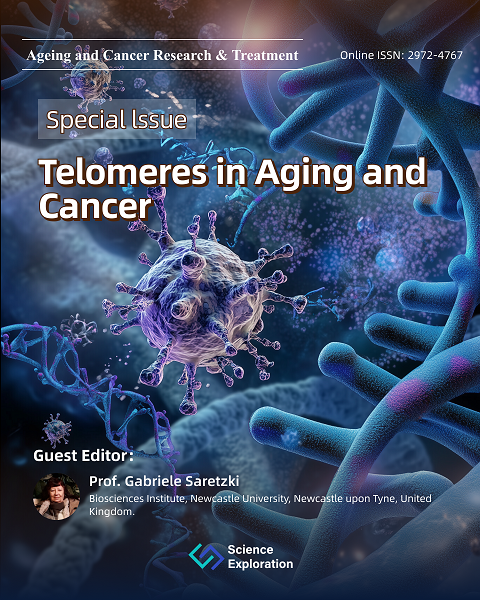Guest Editor(s)
Special Issue Information
Telomeres consist of repetitive DNA sequences (TTAGGG in mammals) and shelterin proteins forming different loop structures to protect the ends of eukaryotic chromosomes. Due to incomplete semiconservative replication (the so-called "End Replication problem") as well as environmental and lifestyle influences that often manifest as oxidative stress, telomeres get damaged and shorten regularly in dividing cells while they accumulate damage in postmitotic cells. In addition, partly due to the high content of Guanines, they are also more sensitive to DNA damage than other DNA sequences. Based on these features, telomeres are associated with cellular senescence and the aging process and have developed into indicators and biomarkers of these processes as well as age-related diseases. However, it is important to note that telomere dysfunction or shortening are not per se causes for aging and related diseases, but rather indicators of increased systemic and chronic oxidative stress resulting in the described processes. Many age-related studies use the length of telomeres in lymphocytes as a surrogate marker for the aging process and the occurrence of age-related diseases and organ malfunction.
While telomeres consecutively shorten and get dysfunctional with increasing age, a specialized reverse transcriptase, telomerase, is able to cap and stabilize telomeres and counteract telomere shortening. While most human somatic cells have no or rather low levels of telomerase activity, the latter is highly upregulated during cellular immortalization and an important prerequisite for the unlimited proliferation capacity of cancer cells. The high upregulation and constitutive presence of telomerase activity often occur through increased transcription of the reverse transcriptase component TERT and includes TERT promoter mutations as one mechanism. In addition, there also exists an additional telomere maintenance mechanism (TMM) which is based on recombination between telomeres and called "Alternative Lengthening of telomeres (ALT)". Due to these TMMs, various cancer therapies focus on turning those off by either inhibiting telomerase or the ALT mechanism in order to reverse the immortality status of cancer cells which is almost unique to all cancer cells while most other occurring mutations are very diverse and thus specific for each different cancer type.
The current Special edition in the journal Aging and Cancer Research & Treatment aims to publish ambitious studies and interesting reviews in these indicated areas in order to demonstrate the broad progress on the topic of telomeres in aging and cancer including novel therapies and strategies for both processes. One current example for anti-aging treatments are the so-called telomerase activators which in cells such as lymphocytes where telomerase can get activated, are able to extend either all telomeres (median telomere length) or just the shortest telomeres preventing them from emanating damage signals. However, there are also various other processes that can be activated due to non-canonical functions of the telomerase protein TERT. These include changes in gene expression, epigenetics, or protein degradation mechanisms such as autophagy which are able to rejuvenate cells or tissues and thus delay or ameliorate the aging process. For cancer treatments several telomerase inhibitors have been characterized, some of them chemicals or plant-derived, which are often considered to be used in addition to classical therapies such as chemotherapy or radiation. Since such cancer therapies often also damage healthy cells inducing senescence, recently combined attention to both processes-cancer therapy and prevention of induced senescence in surrounding or other somatic cells is developing. All such topics are invited to be published in the current Special Issue.
Contact Us
Journal Editorial Office Email: acrtjournal@sciexplor.com
For Author Instructions, please refer to: www.sciexplor.com/acrt/author_instructions
For Online Submission, please login at: http://www.intellimanus.com/#/login?journalPath=acrt

